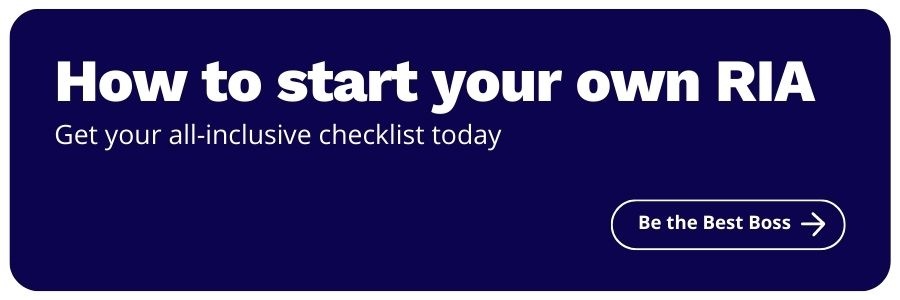Using KPIs to Make Smart Decisions for Your Firm
Share this
Key performance indicators—or KPIs—help you understand if your business is on the right track for success, and if not, where you should focus your attention. KPIs measure many different things, but they all have one thing in common: their purpose is to make your business better.
With the huge amount of data that businesses today generate it is important to know which KPIs you should be tracking. Get them right and overall performance will improve. Get them wrong and you’ll be spinning your wheels focusing on indicators that have no real impact on your business.
So how do you know which data are signals and which data are just noise? As a rule of thumb, data qualify as signals when you can make a strong business decision that actually has an impact. We’ll call those decisions “pulling the lever.” Noise data have no real basis or impact on your actual business; often times, noise data are just vanity metrics.
Let’s unpack that. Which matters more: your number of social media followers or the average revenue generated per social media follower? The first is a vanity metric; the second is an engagement metric—it’s a lever you can pull. Sure, having a lot of social media followers feels good, but that metric alone does not drive your bottom line. What you really want to measure is the monetary impact of your social media following, which is something you can aim to maximize. For example, if you find you make $2 per social media follower, you might consider hiring a social media manager to optimize that KPI to generate more revenue. In this case, you’ve used a KPI to make a strategic decision about your business; that’s how powerful tracking the right KPIs can be.
To reduce the noise and amplify the signals in your data, always start with clear business objectives; when your business goals are well-defined and clearly articulated, it’s much easier to define your KPIs. With that in mind, let’s explore some KPIs that can help you make better-informed decisions about your firm.
Profit Per Client
When it comes to understanding the financial health and growth of your business, knowing your revenue isn’t enough. Just because you are generating revenue doesn’t mean you are making a profit. Advisory firm growth can be broken down into two categories: profit from new clients and profit from existing clients—it’s important to track both new profit coming in and understand how much profit is retained from year to year. Unlike revenue per client, profit per client factors in both revenue and costs, providing more options and flexibility for financial engineering. Essentially, you have more levers to pull to increase profit per client because you can work both sides of the equation: revenue and expenses. Let’s explore two of those levers—productivity and fees.
Productivity. Are you utilizing your time correctly to maximize your productivity? As CEO of your business, you have flexibility in how you manage your time, and in which tasks you tackle yourself versus which tasks you delegate (one of the most effective ways of maximizing your influence is through delegating). Offloading tasks that can just as well be accomplished by a staff member increases productivity. Maybe you’re offloading tasks that you simply don’t enjoy or you’re offloading tasks that are beyond your scope of expertise. Either way, when you delegate successfully, the results are the same: increased productivity.
As the CEO of DragonArmy once wrote, "Do the things that only you can do." If someone else can accomplish a task adequately—or even better than you can—pass it off! Your time should be spent focusing on the things that provide the most value. Make a mental list of the things about your entrepreneurial career that only you can do. Maybe your list includes things like setting the vision, determining your target market, hiring the right people, or communicating the idea. Your list will be unique to you and will be key to helping you decide which tasks can be passed off and which tasks you need to focus your time and energy on most.
Fees. If you want to increase your profit per client, the simplest (albeit not the easiest) way is to raise your fees. Considering that most advisors early in their entrepreneurial careers tend to undercharge for their service, evaluating your fees is often a good place to start. From our 2017 Benchmarking Survey, we learned that 61% of all XYPN members raise their fees after their first year of business, usually because they’ve been undercharging since the launch of their firms or because the value they provide to clients has increased. Knowing your value, and understanding what you should charge for it, can make or break a firm; you should never lose money to your clients in comparison to the value you provide them.
Let’s look at how raising your fees can impact your profit per client KPI. Say you double your minimum annual fee and half your clients leave. While this is of course not ideal (it is also very unlikely), in reality you would make the same amount of money for less work (assuming your level of service remains the same). If you’re effectively communicating your value and you approach your fee hike with confidence (that’s right, Michael Kitces argues that successful fee increases are more about your confidence than your client value), you’re unlikely to lose half of your clients by raising your fees. But even if you do, because you’ve doubled your minimum annual fee, all you would need to do to effectively increase your profit per client is sign one new client.
Time Spent Serving Clients
Knowing how much time you spend serving a client can help improve your business. In particular, this KPI can help you know when you should hire and which position(s) should take priority.
Calculating the average time spent serving a client takes a bit of work, but it’s a worthwhile exercise. And of course there’s technology to help ease the effort. Time-tracking apps like Toggl use a start/stop timer to track when you're working on tasks, which you can categorize; rather than an off-the-top-of-the-head guesstimate, this app can paint a pretty clear picture of how much time you spend serving clients.
While time-tracking apps can give you a sense of task-by-task productivity, time management apps like RescueTime help you identify unproductive web-based habits (like spending too much time on email or Facebook). RescueTime doesn't track your exact tasks, but instead tracks time spent on applications and websites. RescueTime can help hold you accountable for how you spend your time, whereas Toggl can help you measure your productivity based on task. Both can be used strategically to optimize how you spend your time. Let’s walk through an example of how understanding the time you spend serving clients can help you make strategic hiring decisions.
Let’s say you bring in $250,000 in revenue per year and you serve 75 clients on your own. Assuming a “healthy” 2,000 hours of work a year, you generate $125 in revenue for every hour you work; essentially, this means your time costs $125/hour. Through time-tracking, you learn that it takes you 30 minutes to complete a client task (that’s $62.50 worth of your time). If you hire someone at an hourly rate of $31, you will save money, even if it takes them twice as long as you to complete the task (which, if you hire the right person, it shouldn’t). This is just one example of how you can leverage the time spent serving clients KPI to run a more profitable business.
Revenue Per Hour of Client Service
Where are you spending your most valuable time? This is probably a question you don’t hear very often, but knowing the answer is key to working smarter. Your most valuable time is the period of the day when you are most productive. In an ideal world, you could be productive whenever you wanted. But for most of us, that’s not the reality. Our energy, creativity, and productivity ebb and flow. While your productivity goals will always benefit from smart time management strategies, they’ll also get a boost when you understand what part of the day is optimal for you to tackle your most challenging tasks. For many people, their most valuable time is in the morning before "decision fatigue" has set in (and the coffee has worn off). For others, productivity peaks after lunch. Your most valuable time is specific to you; there is no right or wrong time to be most productive.
If you’re more productive in the morning, you may consider waking up a few hours earlier and working so that when you reach the time of day when your productivity starts to plummet, you’ve already accomplished your big to-dos. At that point, you may choose to focus on tasks that require a little less brain power and where you can hit auto-pilot. Once you have an idea of your most valuable hours of work, you can rearrange your schedule to optimize your time to focus on the tasks that only you can do.
Cost of Client Acquisition
Client acquisition cost (CAC) is simply the cost associated with convincing a client to “buy” your service. The nature of CACs varies depending on your line of business, but might include things like marketing campaigns, website development, or promotional materials. In general, any cost associated with finding prospects or converting propects into clients can be considered a CAC. So, how can you calculate your CAC, and why does it matter?
CAC can be determined a variety of ways, but the most straightforward calculation involves dividing all the costs spent on acquiring more clients by the number of clients acquired in a given period of time (for example, over the course of a year).
To calculate CAC, first think of everything you do to bring in a client. Some of those things might include:
- Hours spent blogging, podcasting, making videos, etc...
- Hours spent on newsletters or marketing emails
- Hours spent scheduling meetings (Calendly is a great resource for freeing up this time)
- Hours spent processing notes and updating systems (e.g. your CRM)
- Hours spent meeting prospects (don’t forget to include the time spent commuting if you meet prospects in person)
- Networking events
Pretty much anything you do to draw clients to your business factors into the CAC calculation.
Your CAC is simply:
(hours spent bringing in a client) x (your cost per hour)
# of clients you acquire
Let's say you spend 2.5 hours blogging, 1 hour networking, 0.5 hours scheduling meetings, 8 hours meeting or talking with prospects (don’t forget to include any commute time), and 1 hour creating marketing videos in a single month. That’s 13 hours of time a month (156 hours per year) spent on marketing and prospecting.
As a result of these efforts, you bring in 26 clients throughout the year. This is the denominator of our CAC equation. Your “hourly rate” is $125, making the nominator of our CAC equation $19,500. This means it costs $750 of your time to bring in a client over the course of a year. That might seem like a high cost to secure a single client, but based on the results of our 2017 Benchmaring Survey, financial planners have an astronomically high retention rate. Put in the time and money up front and your efforts will pay dividends well into the future.
Making Business Decisions Off KPIs
When chosen carefully, KPIs deliver exceptional insight into how your business is performing and what you can do to bring about change. They are so important that businesses often thrive or fail based on their ability to identify, define, track and act upon KPIs. Rather than measuring non-critical activities and processes, like many metrics do, KPIs are meant to provide strategic measures of success (or failure).
KPIs provide business alignment, helping you focus on goals and ensure those goals stay on track and aligned with your mission. Knowing which KPIs to measure helps you make sound business decisions—like making strategic hires or raising fees—and provides data to back those decisions up. Understanding basic KPIs like profit per client, time spent serving clients, revenue per hour of client service, and cost of client acquisition helps you focus on which levers to pull to run a profitable business, achieve the level of success you want, and positively impact your clients' lives.

 About the Author
About the Author
Stephen first joined XYPN as a member. After working with the team on smaller projects, he was hooked. He now serves as the Director of Advisor Success. He’s worked with multiple companies inside and outside of the financial services industry, specifically in helping them design their marketing and technology strategies.
When he’s not working, you can find Stephen in Atlanta, GA attending a startup event, reading a book at a random coffee shop, or diving into new experiences with his wife Erin.
Share this
- Road to Launch with XYPN Member Alan Skillern, CFP®, MBA
- Coaching for Better Time Management: Prioritizing Organic Growth in Your Daily Routine
- Boost Your Financial Advisory Practice: SEO Strategies and CRM Optimization for Sales Success
- Navigating the AI Revolution: What Financial Advisors Need to Know
- Advisor Blog (692)
- Financial Advisors (221)
- Growing an RIA (99)
- Digital Marketing (87)
- Marketing (84)
- Community (81)
- Start an RIA (76)
- Coaching (72)
- Business Development (71)
- Running an RIA (70)
- Compliance (69)
- Client Acquisition (65)
- Technology (64)
- XYPN LIVE (59)
- Entrepreneurship (56)
- Sales (49)
- Practice Management (44)
- Client Engagement (41)
- XYPN Books (38)
- Bookkeeping (37)
- Investment Management (37)
- Fee-only advisor (36)
- Lifestyle, Family, & Personal Finance (31)
- Employee Engagement (30)
- Client Services (25)
- Financial Education & Resources (24)
- Journey Makers (21)
- Market Trends (21)
- Process (14)
- Niche (11)
- SEO (9)
- Scaling an RIA (9)
- Career Change (8)
- Transitioning Your Business (7)
- Partnership (6)
- Transitioning To Fee-Only (4)
- Social Media (3)
- Transitioning Clients (3)
- Emerald (2)
- Persona (2)
- RIA (2)
- Onboarding (1)
- Sapphire (1)
Subscribe by email
You May Also Like
These Related Stories

Scheduling Your Business: How to Get Organized, Stay on Track, and Hit Goals
Aug 24, 2017
7 min read

Invest in Yourself: How You Can Grow with Your Business
April 16, 2018
7 min read




